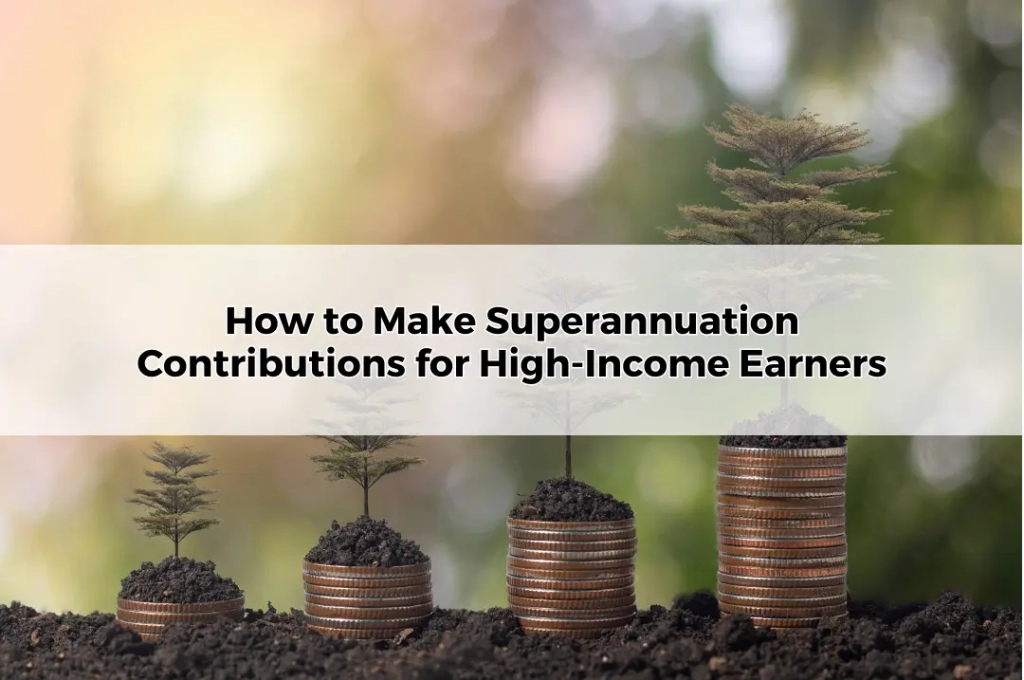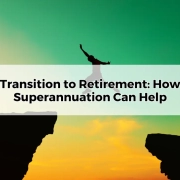How to Make Superannuation Contributions for High-Income Earners
Table of Contents
ToggleSuperannuation is one of the most effective vehicles for building retirement wealth in a tax-efficient manner. For high-income earners, who often face substantial tax obligations, maximising super contributions is particularly important. Superannuation offers an opportunity to reduce taxable income while securing a comfortable retirement. As Australia’s superannuation system incentivises long-term savings through concessional tax rates, those in higher tax brackets can benefit considerably by making strategic contributions.
While the rules around superannuation contributions are the same for everyone, high-income earners have specific considerations and opportunities that can significantly impact their financial future. Understanding how to make the most of these contributions is essential for wealth accumulation and long-term financial security.
Understanding Contribution Caps for High-Income Earners
Superannuation contributions are subject to two types of caps: concessional contributions and . For the 2024–2025 financial year, the concessional contribution cap is $30,000. These contributions are made from pre-tax income, such as employer contributions, salary sacrifice, and personal deductible contributions. Non-concessional contributions, which are made from after-tax income, have an annual cap of $120,000.
For high-income earners, exceeding these caps can result in additional tax liabilities. Contributions above the concessional cap are taxed at an individual’s marginal tax rate, plus an excess contributions charge. Therefore, staying within these limits is crucial to avoid penalties and maximise the benefits of superannuation.
Maximising Concessional Contributions
For high-income earners, concessional contributions provide one of the most effective ways to reduce taxable income. Concessional contributions are taxed at a flat rate of 15% within the super fund, which is often significantly lower than the marginal tax rate for individuals earning over $120,000. By directing more pre-tax income into superannuation via salary sacrifice or personal contributions, high-income earners can significantly reduce their annual tax bill.
Salary sacrificing allows employees to contribute a portion of their pre-tax salary into super, lowering their taxable income while increasing their retirement savings. This strategy not only enhances long-term wealth but also provides immediate tax relief, making it an essential tool for high-income individuals.
Non-Concessional Contributions
Non-concessional contributions allow high-income earners to inject additional funds into their superannuation without the contributions being taxed within the fund. While non-concessional contributions do not offer immediate tax deductions, they allow for larger superannuation balances to grow tax-free within the fund. High-income earners who have reached their concessional cap can use non-concessional contributions to further boost their retirement savings.
The bring-forward rule is particularly beneficial for those with surplus income or assets, allowing them to contribute up to three years’ worth of non-concessional contributions ($360,000) in a single year. This strategy is ideal for those looking to maximise superannuation growth or those who have received a large sum of money, such as an inheritance or a property sale.
Division 293 Tax
Division 293 tax is an additional 15% tax applied to concessional contributions for individuals with adjusted taxable incomes exceeding $250,000. This brings the total tax on concessional contributions for high-income earners to 30%. While this additional tax may seem punitive, superannuation still offers a tax advantage when compared to the marginal tax rates applied outside of super.
High-income earners can manage the impact of Division 293 tax by carefully structuring their contributions and exploring additional strategies, such as using non-concessional contributions or spousal contributions, to further optimise their tax position.
Utilising the Catch-Up Contributions Rule
The catch-up contributions rule allows individuals to carry forward unused portions of their concessional contribution cap for up to five years, provided their total superannuation balance is less than $500,000. This strategy is particularly useful for high-income earners who may not have maximised their contributions in previous years.
For those with irregular income or those who anticipate a significant bonus or windfall, catch-up contributions can provide an opportunity to maximise tax-deductible super contributions in a single year, reducing taxable income and accelerating retirement savings.
Spouse Contributions for High-Income Earners
For high-income earners, making spouse contributions can be an effective way to reduce personal tax liabilities while helping a partner build their superannuation balance. If your spouse’s income is below $37,000, you may be eligible for a tax offset of up to $540 when making contributions to their super account.
Additionally, superannuation splitting allows one partner to transfer up to 85% of their concessional contributions to their spouse’s super account. This can be particularly advantageous when one partner has a significantly lower super balance or is not working, helping to balance retirement savings across the couple.
Superannuation Contributions Through Bonuses and Windfalls
High-income earners often receive bonuses or one-off payments, which can be strategically directed into superannuation to reduce their tax burden. By contributing a portion of these lump sums into super, high-income earners can take advantage of concessional tax rates within the superannuation system.
For those looking to boost their retirement savings quickly, non-concessional contributions are also a viable option. Directing windfalls or significant bonuses into super provides long-term benefits through tax-effective growth, ensuring that these funds are preserved for retirement rather than being eroded by high personal income tax rates.
The Role of Superannuation in Estate Planning for High-Income Earners
Superannuation plays a significant role in estate planning, particularly for high-income earners who want to ensure that their wealth is transferred tax-efficiently to beneficiaries. Superannuation balances can be passed on to dependants, including spouses and children, either as a lump sum or as an income stream, with varying tax implications depending on the circumstances.
High-income earners should carefully consider their nomination of beneficiaries and the structure of their estate plan to minimise taxes and ensure that their superannuation is distributed according to their wishes. This can involve the use of binding death benefit nominations or reversionary pension arrangements.
Superannuation and Self-Managed Super Funds (SMSFs)
For high-income earners, a Self-Managed Super Fund (SMSF) can offer greater control over investments, contribution strategies, and estate planning. SMSFs provide the flexibility to invest in a wider range of assets, including property, direct shares, and private businesses, which can align with the investment goals of high-net-worth individuals.
SMSFs also offer tailored contribution strategies, allowing high-income earners to manage their tax position and retirement savings more effectively. However, SMSFs require significant oversight and administrative responsibilities, making them more suitable for those who want direct involvement in managing their super.
Contributions for High-Income Earners Nearing Retirement
As retirement approaches, high-income earners can maximise their superannuation balance by taking advantage of transition-to-retirement (TTR) strategies. A TTR pension allows individuals to access part of their superannuation while still working, providing additional income in the lead-up to retirement while maintaining concessional tax treatment.
This strategy is particularly useful for those looking to reduce working hours while continuing to build their super. It allows for flexibility in retirement planning while offering tax advantages on income drawn from superannuation.
Conclusion
Navigating the complexities of superannuation as a high-income earner requires expert guidance. Working with a Toowoomba Financial Adviser can help ensure that you are making the most of your contribution strategies, minimising tax liabilities, and maximising retirement savings. Professional advice can also help tailor strategies that align with your personal financial goals, ensuring long-term financial security.
At Wealth Factory, we specialise in providing high-income earners with personalised superannuation strategies that optimise contributions and enhance tax efficiency. By seeking professional advice, you can ensure your superannuation works harder for you, securing a prosperous retirement.









